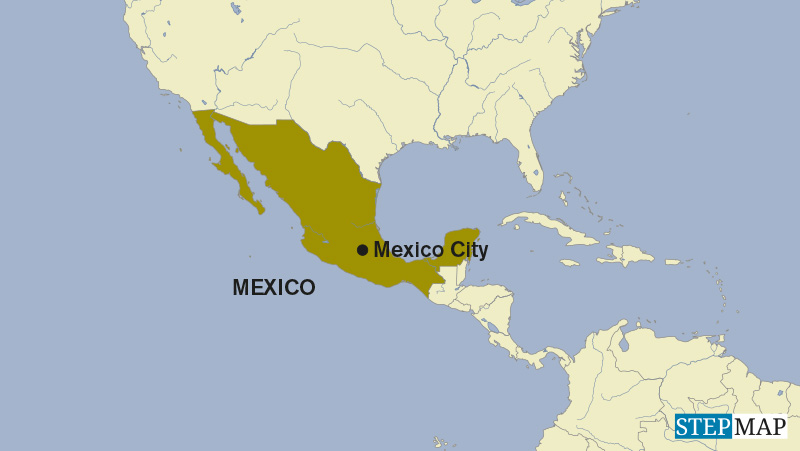Latin American migration
Seeking greener pastures

An estimated 38 million people of Mexican origin live abroad, 98 % of them in the United States. Of all Hispanics living in the USA, 61.5 % (37.2 million) identify as being of Mexican origin, according to the Pew Research Center and the US Census Bureau. Approximately 12 million of them were born in Mexico and 26 million are of first, second or subsequent generation Mexican descent.
Beyond geographical proximity, the USA and Mexico share a long history of migratory exchange, marked by the formation of networks that have woven individuals and families together. Legally, Mexico stands as the primary recipient of H-2A and H-2B visas from the US, primarily for temporary agricultural and other services. At the same time, in 2022, 82.8 % of the Mexican-born population in the USA obtained legal permanent residency through family connections, while six percent secured it through employment.
Mexican consular and diplomatic missions estimate that almost 400,000 Mexicans are living in countries other than the US, including Canada, Spain, Brazil, the United Kingdom and Germany.
The National Institute of Statistics and Geography (Instituto Nacional de Estadística y Geografia – INEGI) reports that reasons for Mexicans to emigrate in 2020 included family reunification (36.5 %), looking for work (16.4 %), accepting a job opportunity (12.4 %), marriage (9.2 %), studying (6.7 %) and criminal insecurity or violence (four percent). The average age of the migrating population is between 18 and 29, followed by people between 30 and 40.
Studying abroad is the fifth most important reason for migrating from Mexico. The motivations for going to foreign universities range from seeking a higher quality education to being mentored by a specialised professor.
Job market chances
Having studied abroad can make it easier to enter the job market. According to OECD estimates, employability rates increase with higher education levels, reaching 81 % at the undergraduate level and 85 % at the postgraduate level in Mexico. Moreover, data from the Mexican Institute of Competitiveness (IMCO) show that the salaries of Mexican university graduates can increase between 30 % and 70 % depending on the degree, specialisation – and location. For example, a Mexican with a Bachelor’s degree earns on average 8.5 times more in the USA than in Mexico.
Unsurprisingly, the USA remains the top choice for studying abroad, according to the Yearbook of Migration and Remittances 2023 published by Banco Bilbao Vizcaya Argentaria (BBVA) Research, the BBVA Foundation and the National Population Council. In 2020, 41.6 % of Mexican international students studied in the USA, followed by Spain (10.1 %), Germany (9.9 %), Canada (7.9 %), France (6.5 %) and the United Kingdom (5.4 %). The yearbook data show that around 100,000 Mexicans went abroad for educational purposes between 2015 and 2020.
In 2022, Germany replaced the USA as the primary destination for Master’s programmes, while the United Kingdom takes first place for doctoral studies. Factors influencing these choices include opportunities for obtaining student and work visas, internships, scholarships covering the study period and university rankings.
At home in Mexico, the situation in the education sector is discouraging. In 2024, the federal government cut the budget for science, technology and innovation, with a 14.6 % reduction in investment in higher and postgraduate education. The academic community is facing great uncertainty. Only few people have access to scholarships to study abroad.
Surging crime rates
The spiral of violence in Mexico is driving people out of the country, too. The number of murders, femicides and disappearances is shooting up. According to the Mexican Institute for Human Rights and Democracy, the states Jalisco, Tamaulipas, Estado de Mexico, Veracruz and Nuevo León account for 50 % of missing persons. Especially young people are affected by crimes.
Compounding these challenges is the impact of organised crime. Young people become victims of forced labour or turn into criminals themselves. In 2021, a study by the Children’s Rights Network (REDIM) and the National Citizen Observatory for Security, Justice and Legality estimated that between 145,000 and 250,000 children and teenagers in Mexico are at risk of being recruited by criminal groups. Given these facts, it is not surprising that the number of children and young people who are leaving Mexico is currently the highest in more than a decade. Their destination is usually the USA and relatives who already live there.
However, Mexico’s role in the global migration landscape nowadays extends beyond being a country of origin; it also functions as a transit and destination country. It is part of the world’s largest migration corridor, through which thousands of migrants pass every month on their way to the US.
Furthermore, according to the International Organization for Migration (IOM), the number of immigrants in Mexico jumped by 123 % between 2000 and 2020. In the past ten years, the number of asylum seekers has increased in particular. The IOM also estimates that of 118,478 refugee applications in 2022, five out of ten were made by people from Honduras (26.2 %), Cuba (15.3 %) or Haiti (14.4 %).
Pamela Cruz is the Special Projects Coordinator at Comunalia, a network of community foundations in Mexico and Strategic Advisor at MY World Mexico.
pamela.cruzm@gmail.com













